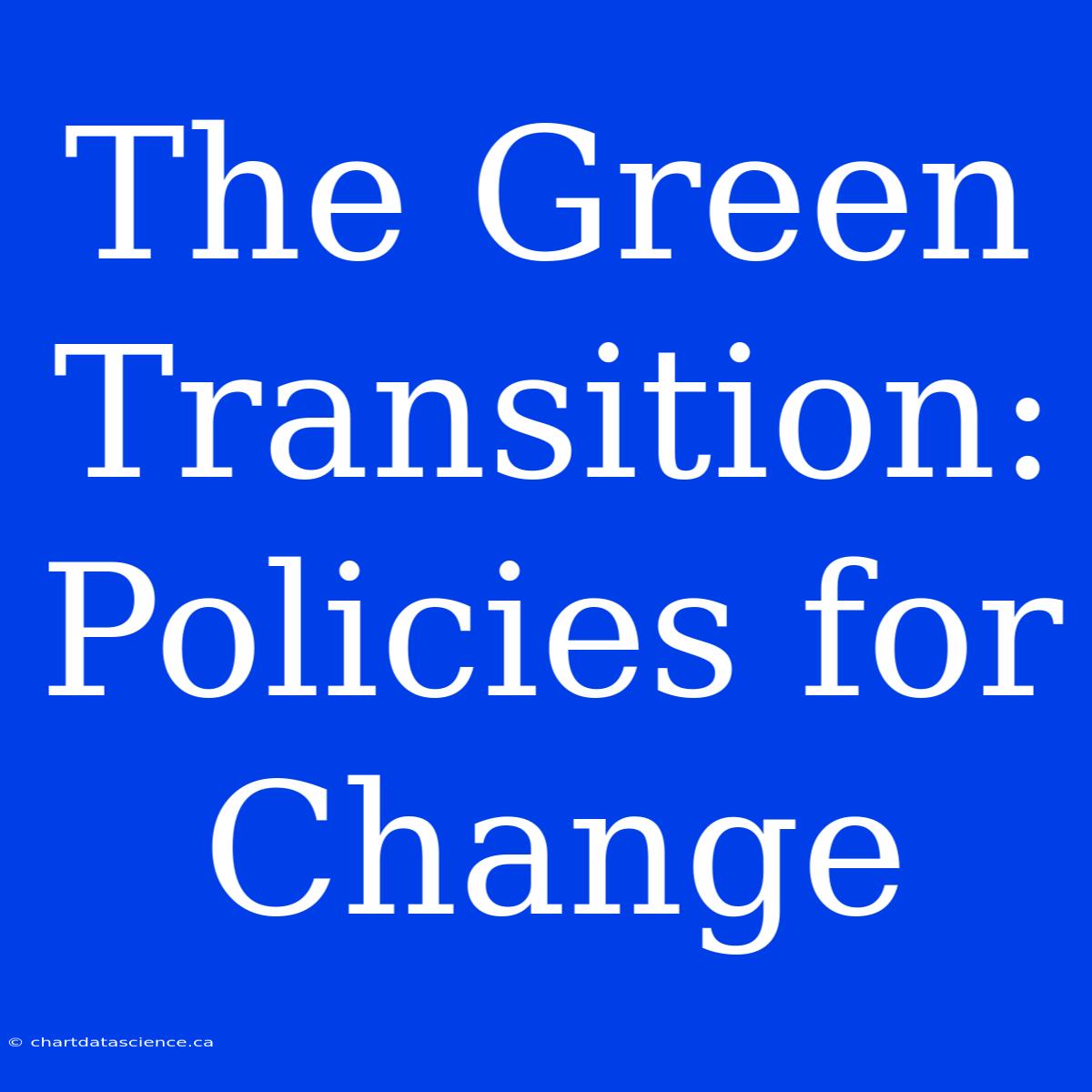The Green Transition: Policies for Change
The world is facing a climate crisis, and the need for a green transition is more urgent than ever. This shift towards a sustainable future requires bold policy decisions that incentivize clean energy, reduce emissions, and protect our planet.
What is the Green Transition?
The green transition is a global effort to move away from fossil fuels and towards a sustainable, low-carbon economy. This involves a fundamental change in our energy systems, transportation, agriculture, and industry. Think of it as a massive overhaul, requiring significant investments and coordinated action from governments, businesses, and individuals.
Key Policies for a Green Transition
1. Carbon Pricing: This is a cornerstone of green transition policy. Carbon taxes and emissions trading schemes put a price on carbon emissions, making it more expensive to pollute. This encourages businesses to invest in cleaner technologies and consumers to adopt greener choices.
2. Renewable Energy Investments: Governments can accelerate the transition by supporting renewable energy sources like solar, wind, and hydro. This can be done through subsidies, tax breaks, and setting ambitious targets for renewable energy deployment.
3. Energy Efficiency Standards: Making appliances, buildings, and transportation systems more energy-efficient reduces energy consumption and emissions. This can be achieved through regulations, incentives, and public awareness campaigns.
4. Sustainable Transportation: Promoting electric vehicles, public transportation, and active modes of transport (walking and cycling) reduces reliance on fossil fuels and improves air quality.
5. Climate-Smart Agriculture: Adopting sustainable agricultural practices like regenerative farming, precision agriculture, and reducing food waste can minimize the environmental impact of agriculture and contribute to climate resilience.
6. Green Finance: Mobilizing financial resources for green projects is crucial. Governments can create green investment funds, promote green bonds, and incentivize private sector investment in sustainable businesses.
The Importance of a Just Transition
The green transition must be equitable and inclusive. This means ensuring that workers in industries affected by the shift have access to retraining and reskilling opportunities, and that marginalized communities are not left behind. A just transition also requires addressing environmental justice issues and ensuring that the benefits of the green transition are shared equitably.
Conclusion
The green transition is a complex challenge, but it is also an opportunity to build a better future. By implementing effective policies that incentivize sustainable practices, reduce emissions, and ensure a just transition, we can create a more resilient, equitable, and prosperous world for generations to come.

